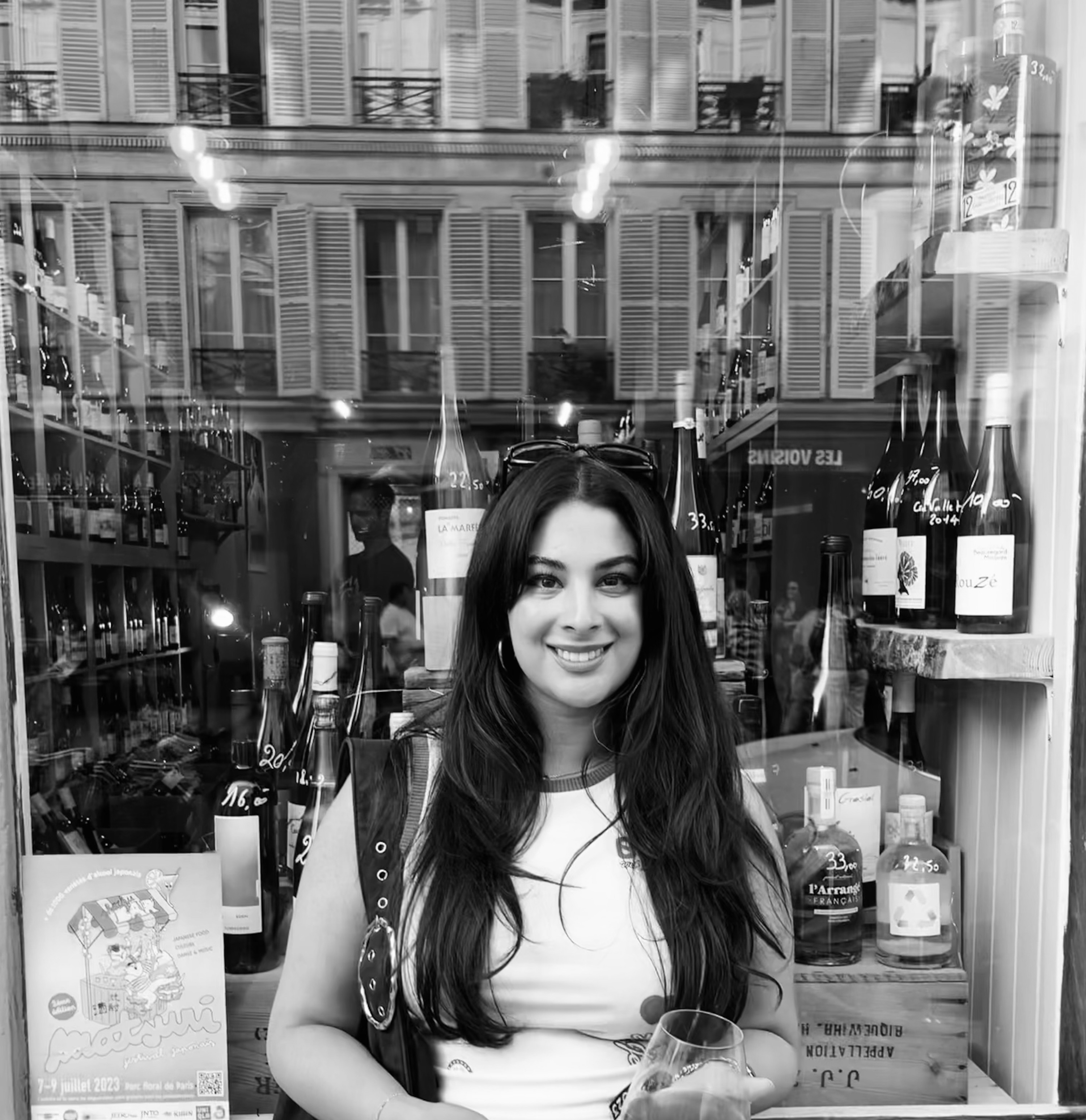FACEGYM Founder Inge Theron on Longevity, Why Facial Massage Works, and Lessons From Being a Professional ‘Spa Junkie’
The entrepreneur on working with your face, not against it


If you want to see real innovation in the beauty industry, just look at FACEGYM, which Inge Theron founded back in 2015. It's simple, yet ingenious for the way in which it (literally) placed the power back in women's hands; facial massage or "fitness" as she likes to call it, can be done by anyone, anywhere, but preferably in one of the many FACEGYM studios globally.
Theron is, of course, uniquely qualified to bring this blend of ancient and contemporary techniques to the masses. The South African journalist and entrepreneur spent over 10 years as The Financial Times' resident spa junkie, where she reviewed the latest high-end aesthetics, nutrition and fitness treatments. But the treatments gradually became more and more invasive, until she was left house-bound after a disastrous thread lift. "I realised I was missing something fundamental," she tells me. "I was spending thousands on biohacking the body, but doing almost nothing to naturally support the 40+ muscles in my face. It hit me: we train our bodies at the gym, so why not our faces?"
In the years since, FACEGYM has expanded massively across the globe, having recently partnered with the iconic Kulm Hotel in St Moritz to provide a ski and sculpt menu in their spa. And Theron has kept busy outside of gua shas and microcurrents too—she is the chief "sparchitect" at ITANDA, the luxury spa design agency behind the likes of Knightsbridge's Surrenne. Below, we dig into her beauty and wellness philosophy, and the ongoing evolution of FACEGYM.
On stripping beauty back to basics
After testing the world’s most advanced aesthetic treatments for over a decade — from LA to Tokyo — I realised I was missing something fundamental. I was spending thousands on biohacking the body, but doing almost nothing to naturally support the 40+ muscles in my face. It hit me: we train our bodies at the gym, so why not our faces? I decided to completely strip back everything I was doing—no more injectables, no more chasing trends—and rebuild my facial muscle strength using the basics: movement, circulation, muscle stimulation, and energy flow. And that’s where FaceGym came from: it's not a facial, but a results-driven workout studio for your face. It was radical in its simplicity—but backed by science and serious results.

On lessons learnt from being a spa junkie
If you want to look great and age well it is about treating the whole self, you can laser, inject, and freeze all you want, but if you’re not supporting your skin’s natural systems with a healthy diet, good consistent sleep, detoxifying in the sauna, using SPF every day and doing daily facial massage, then you wont get a long lasting result. What makes a long-term difference is living a healthy lifestyle. And that by adding in deep tissue massage and resistance training of the muscles in the face to your daily routine will give you incredible results. It’s clinically proven to increase mitochondrial production in dermal fibroblasts — those are the cells responsible for producing collagen and elastin. One 2021 study showed that just five minutes of mechanical stimulation per day improved skin thickness and elasticity. Another study found that improved lymphatic drainage can reduce facial puffiness and inflammation significantly. Studies show that facial massage increases circulation by up to 25%, boosts lymphatic drainage, stimulates collagen production, and even improves muscle tone and skin elasticity. At FaceGym, we’ve taken that heritage and layered in performance—our workouts use high-energy knuckling, sculpting, and cardio massage to activate muscles and reshape the face. It’s the ancient art of massage, upgraded with the precision of a workout.
On the treatments she wouldn't recommend
I worry about the normalisation of Botox and filler for women in their early twenties. You’re not “preventing” ageing—you’re creating facial dependency, weakening underlying muscles, and potentially distorting natural facial symmetry. Instead, we should be educating young women on fascia health, muscle integrity, and circulation. Massage, gua sha, facial exercise—these are time-tested tools that respect the biology of ageing. They work with your face, not against it.
A post shared by FACEGYM (@facegym)
A photo posted by on
Has your approach changed since stopping your column for the FT?
Massively. Back then, I was chasing novelty—what’s new, what’s next, what’s “miracle.” But now I’m more interested in what lasts. Beauty to me isn’t about erasing the signs of ageing—it’s about keeping your identity strong as you evolve. And I’ve become obsessed with the invisible layers: fascia health, muscle tone, lymphatic flow. These are the things that hold beauty in place—and no one teaches you that until something starts to sag or shift. Now I build from the inside out.
Celebrity news, beauty, fashion advice, and fascinating features, delivered straight to your inbox!
Do you think fillers and botox have become too normalised?
They’ve become normalised, especially through social media—where tweakments are packaged as no more serious than a manicure. But the truth is, these are medical interventions with long-term implications. I had a terrible thread lift that left me looking lopsided. I lost my confidence, could not look in the mirror, and I was emotionally depleted, depressed, and it took months before I recovered. We don’t talk enough about what happens when it goes wrong. I don't think the experts give us the full picture. Filler is not just for Christmas! Had I known it would last for years and potentially create scar tissue, I am sure I would not have gone ahead with the procedure.
On empowering women through FACEGYM
Facial massage puts the power back in your hands—literally. It’s not about erasing age, it’s about optimising what you have. You’re increasing ATP production, boosting skin metabolism, improving tone—and you’re doing it yourself, not outsourcing it to a machine or a needle. There’s something deeply empowering about that. At FaceGym, our clients leave not just looking more lifted and glowing, but feeling stronger, more connected to their face. It becomes a ritual, a practice of self-respect. Ageing gracefully isn’t about avoiding wrinkles — it’s about maintaining vitality, confidence, and integrity in your appearance.
A post shared by FACEGYM (@facegym)
A photo posted by on
How did you go about learning about face massage?
I went on a global quest. I trained in Japan, Brazil, and Paris, anywhere that had a tradition of facial work. I studied lymphatic drainage in Brazil, deep muscle stimulation in Paris, and the ancient technique of Kobido in Japan. But I didn’t want to just replicate tradition—I wanted to build something contemporary, energetic, and results-driven. FaceGym’s signature moves were born at the intersection of massage and fitness. We adapted techniques from physiotherapy, facial reflexology, and manual lymphatic drainage, then added high-intensity knuckling, muscle sculpting, and electrical stimulation. Each movement is choreographed to activate muscles, increase blood flow, and oxygenate the skin. It’s facial fitness—you should feel it working.
On consistency
Consistency is everything. One session gives you that incredible “post-gym glow”—the cheekbones are more defined, the jaw’s sharper, the eyes look more awake. But just like with physical training, the real magic comes from repetition. We’ve built a full toolkit so clients can maintain results at home: our Active Rollers, Hydro-Bound Serum, and our Collagen Infusion Balls (which are clinically proven to increase skin firmness by 12% in just one week). We’re giving people the tools to train their skin, boost their collagen, and keep their facial muscles in peak condition—all from their bathroom mirror.
On FACEGYM's unique design
Design is everything, because the space is part of the transformation. I never wanted FaceGym to feel like a traditional spa or sterile clinic. I wanted energy, movement, sound. The music is loud, the lighting is bold, the team is high-vibe—it feels like a fitness studio because we’re training your face like we train your body. But there’s also precision: the mirrors, the tools, the scent—everything is designed to activate the senses and reinforce the idea that this is a ritual, not a chore. Wellness should feel aspirational and accessible. And... Beauty had become too serious—too isolated, too clinical. I wanted to bring joy back into the experience. Music creates rhythm. Group energy creates momentum. When you walk into FaceGym, you feel like you’re part of a tribe of women taking ownership of their skin—it’s inspiring, not intimidating. Also, being seen while taking care of yourself is powerful. It removes shame from self-care and replaces it with pride. We’re building a culture of active ageing, not age avoidance.
On FACEGYM's evolution
We’re evolving from being just a face workout brand into a performance skincare ecosystem—one that supports facial health on every level: topical, muscular, and neurological. We’ll be opening more studios globally, expanding our product innovation into tools, devices, and tech that bring pro results home, and introducing new longevity-led protocols that support the skin long-term. We’re also investing in more clinical research to back everything we do— because women deserve skincare that’s not only results-driven, but evidence-based.
What does longevity mean to you?
For me, longevity isn’t about living forever—it’s about living better, longer. It’s the convergence of biology, design, and ritual. It’s about environments that regulate your nervous system, routines that enhance your natural rhythms, and treatments that make your body more resilient over time. Longevity should be built into the architecture of your life. [Generally speaking], I wish the wellness and beauty industries were less about packaging trends and more about outcomes. Longevity isn’t a smoothie and an IV drip—it’s cellular regeneration, mitochondrial health, and emotional resilience. We need more transparency, more cross-disciplinary collaboration, and less of the performative wellness aesthetic. Consumers are savvier now—they want evidence, they want storytelling, and they want spaces that genuinely help them feel well, not just look well.
Her advice to young women...
Don’t skip the foundations. You don’t need injectables in your twenties—you need to focus on circulation, hydration, mineral support, and fascia care. Learn your face. Understand your skin. Build strength, not dependence. The best thing you can do is activate, not paralyse. Train your skin the way you train your body—with intention, consistency, and joy. That’s what will serve you not just now, but for decades to come.

Nessa Humayun is the Beauty Editor at Marie Claire UK. With over eight years of editorial experience across lifestyle sectors, Nessa was previously the Editorial Lead of HUNGER Magazine, and has bylines in British Vogue, Dazed, and Cosmopolitan. A self-confessed human guinea pig, Nessa covers everything from product must-haves to long-reads about the industry writ large. Her beauty ethos is all about using products that work hard, so you don't have to.